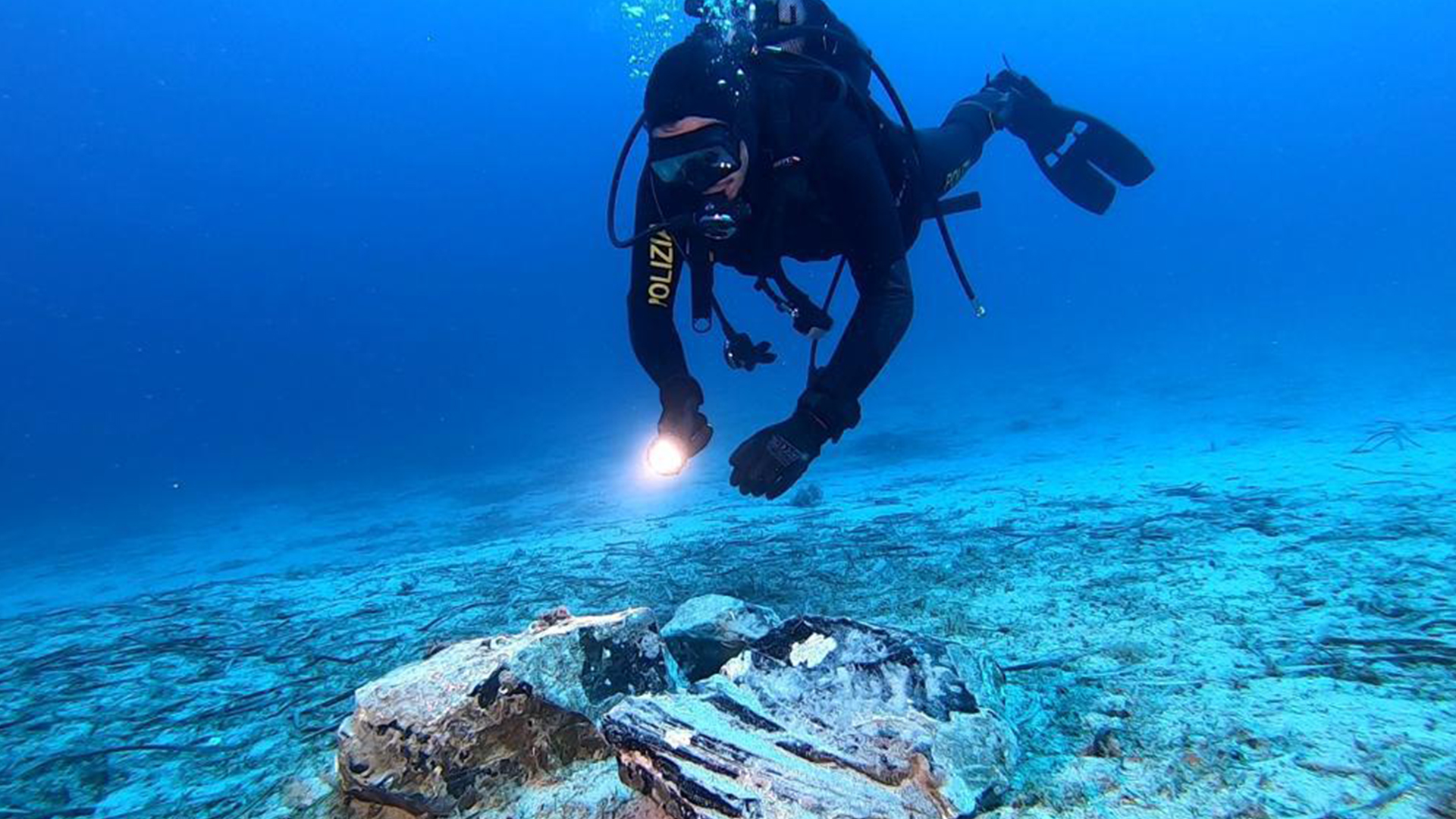
Divers from Naples, Italy have recovered a block of obsidian from the remains of what is likely a Neolithic, or New Stone Age shipwreck near the island of Capri.
The natural-glass block is about the size of a very large book and weighs almost 17.6 pounds (8 kilograms). There are visible signs of chiseling on its surface, and archaeologists think it was an obsidian "core" that would have been used to make sharp-edged flakes for cutting.
The divers, members of the Naples Police underwater unit, recovered the artifact on Monday (Nov. 20) on the seafloor at a depth of between 100 and 130 feet (30 and 40 meters) according to a translated statement from Italy's Ministry of Culture.
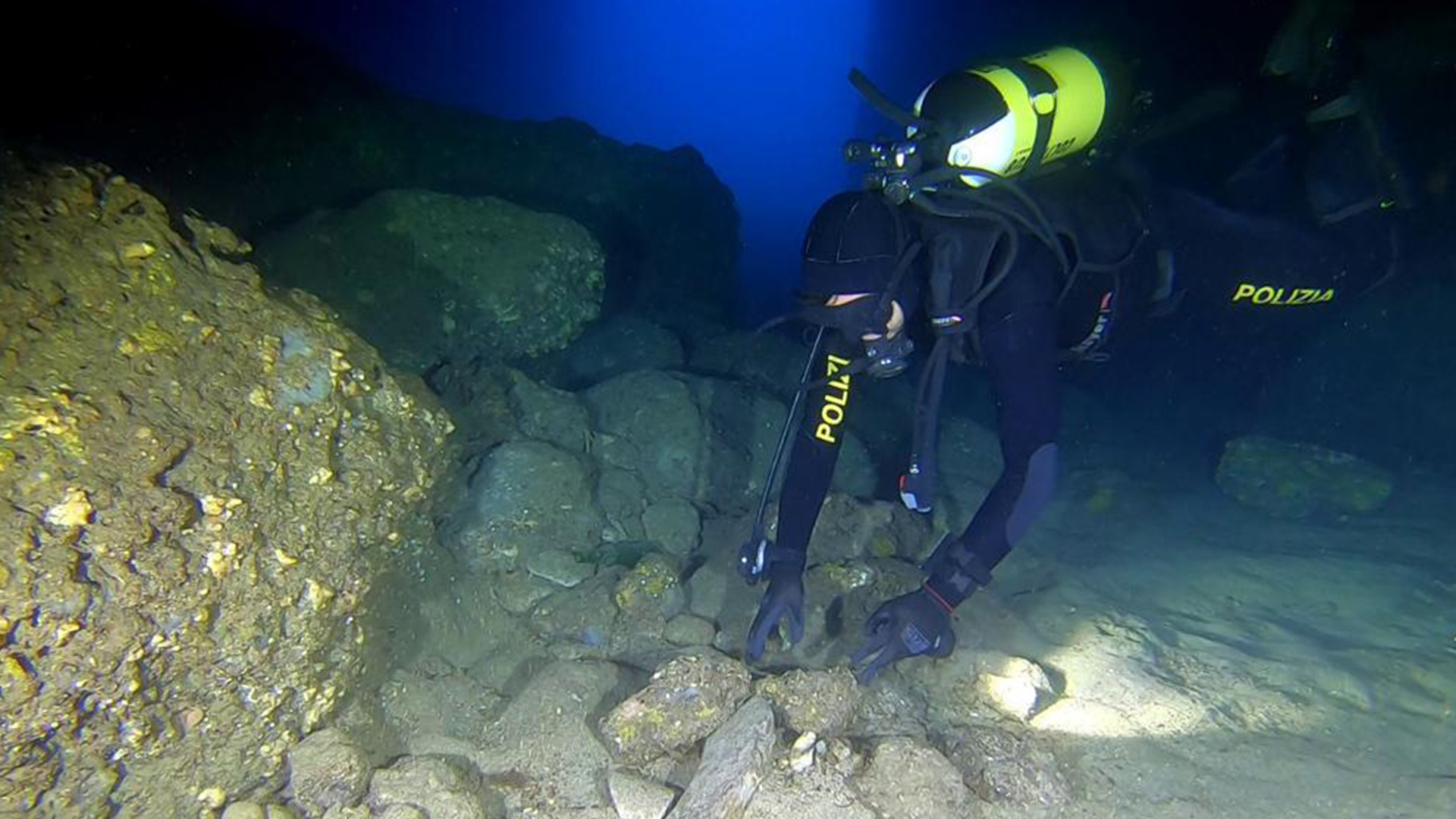
The dive took place within sight of Capri's famous Blue Grotto — a sea cave once used for private bathing by the Roman emperor Tiberius, who had a palace on the island. The cave is now a tourist attraction that can be visited by boat, but swimming there is prohibited because authorities say the waves and tides make it too dangerous.
Related: 7,000-year-old structure near Prague is older than Stonehenge, Egyptian pyramids
Prehistoric wreck
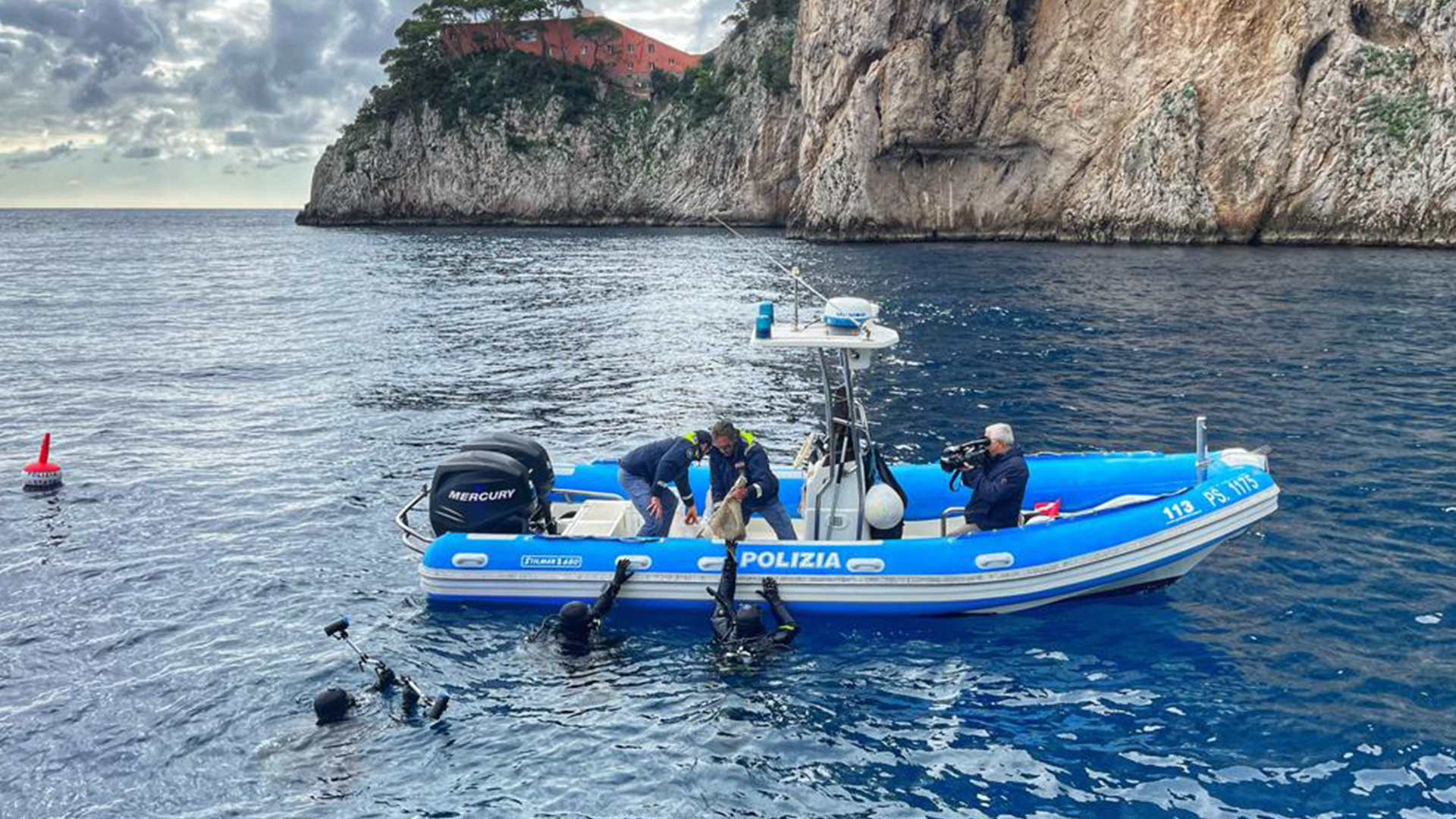
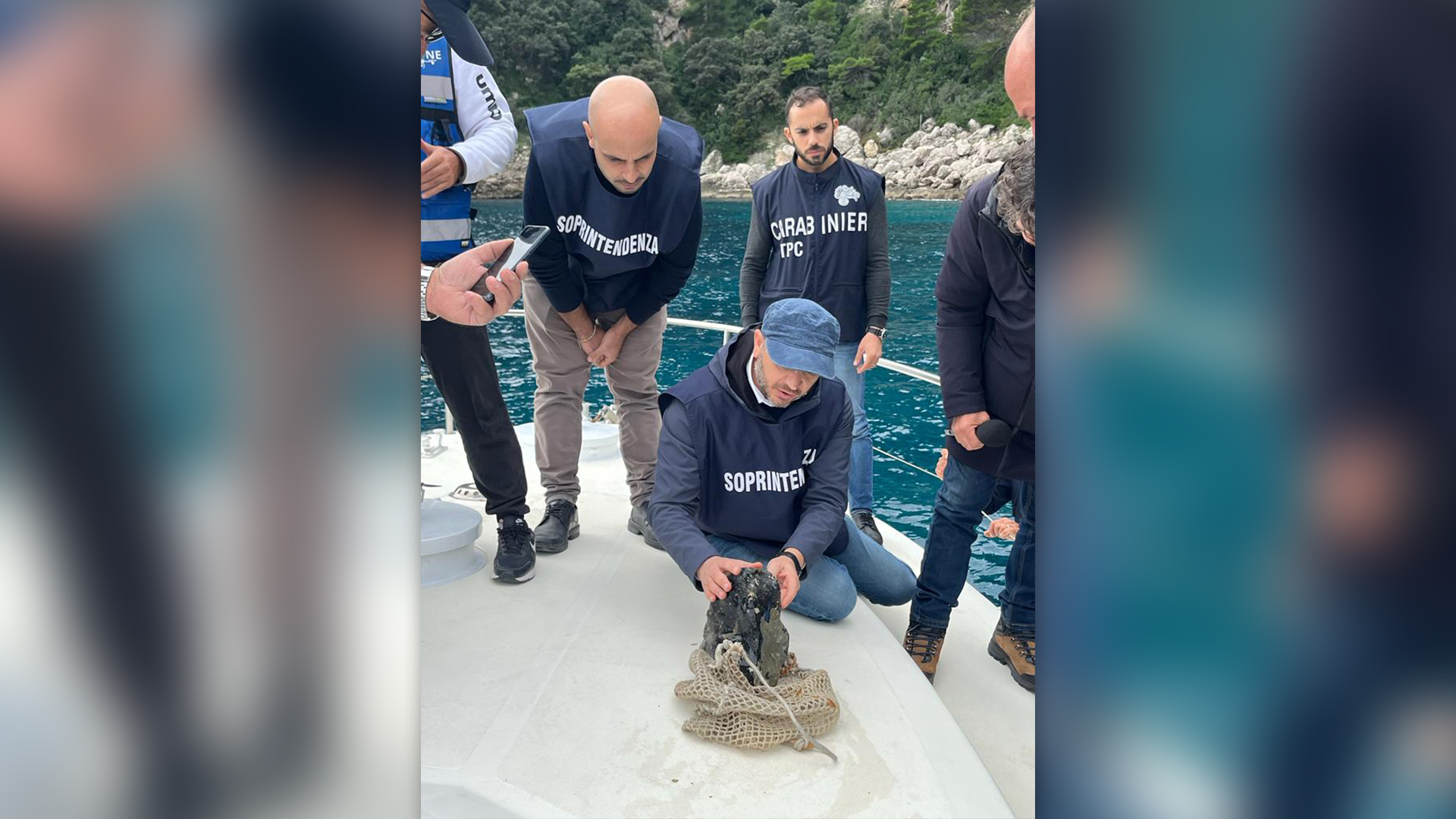
The police diving team discovered the underwater site earlier this year and announced it in October, although the precise location is being kept secret to protect it from looters, the statement said.
The obsidian core is the first artifact from the wreck to be recovered, but others are expected to be found in the same area.
Archaeologists think the natural glass was once part of a cargo carried on a vessel during the Neolithic period, more than 5,000 years ago. However, the watercraft itself is unlikely to be found, as wood that old usually rots away.
The archaeologists involved praised the expertise of the police divers, noting that the site lies in relatively deep water that made archaeological investigation and recovery difficult.
The artifact is now in storage in Naples and will soon be cleaned, examined and preserved, the statement said.
Obsidian core
Obsidian is a dense black glass found in cooled lava. It fractures into pieces with sharp edges and was used in ancient times to make cutting and piercing tools.
It's not yet known where this obsidian originated, but there are deposits of it on some volcanic islands of the Mediterranean, including the offshore islands of Palmarola, near Naples, and Lipari, near Sicily.
Maritime archaeologist Sean Kingsley, the editor-in-chief of Wreckwatch magazine, said the obsidian could have been intended for trade but may also have been used for making ritual items, like those found in Capri's Neolithic Grotta delle Felci.
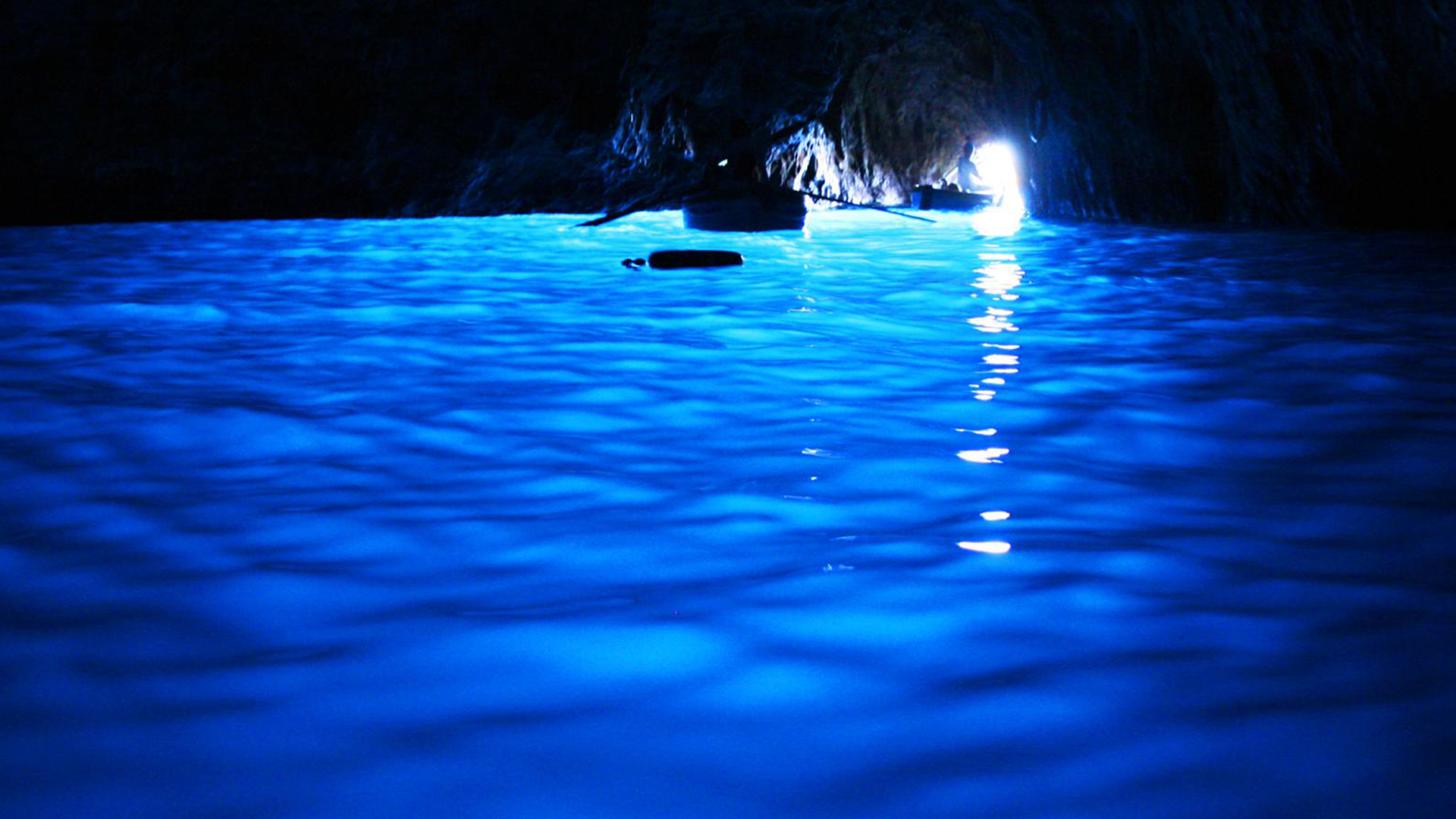
Kingsley, who wasn't involved in the discovery, told Live Science in an email that Neolithic seafaring technology was exemplified by five canoes from the submerged "La Marmotta" site under Lake Bracciano near Rome, which have been dated to between 5690 and 5250 B.C.
Each canoe was about 34 feet (10 m) long and there are indications at least one was fitted with sails.
"These craft may have sailed the Mediterranean, perhaps with two canoes strapped together to form catamarans, which could carry up to five [metric tonnes, or 5.5 tons] of cargo," Kingsley said.







